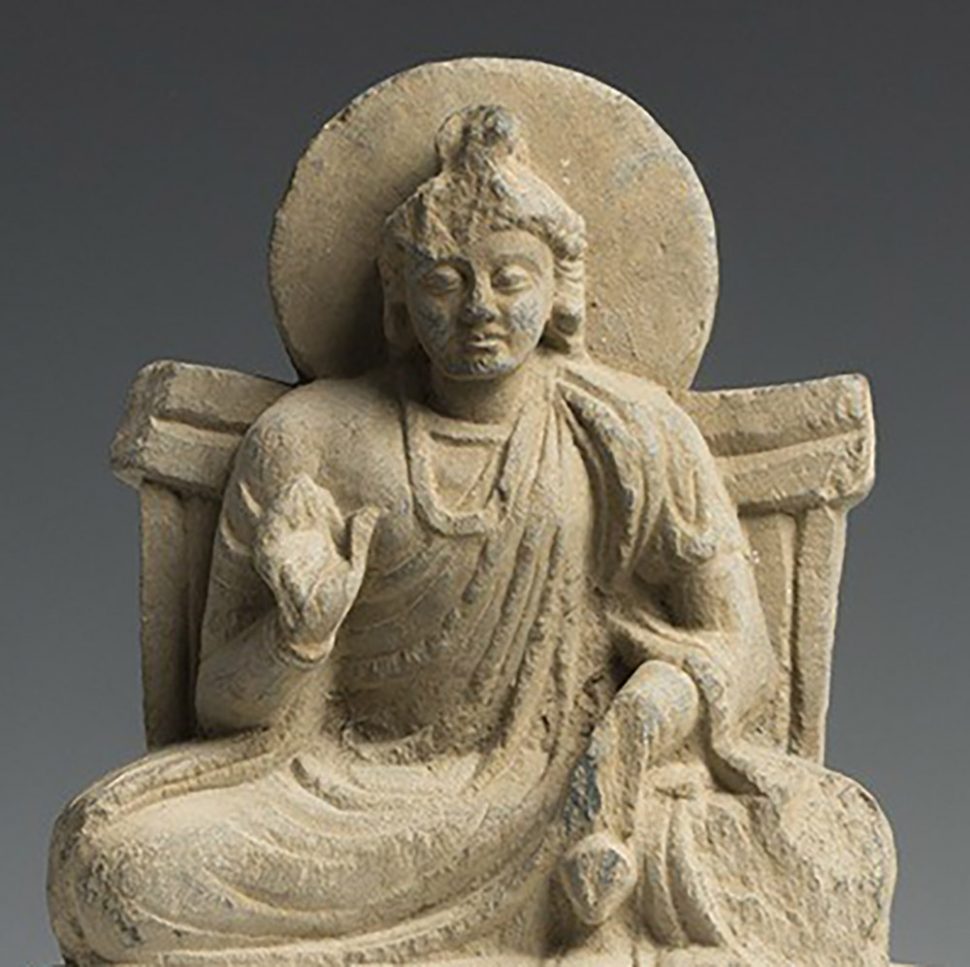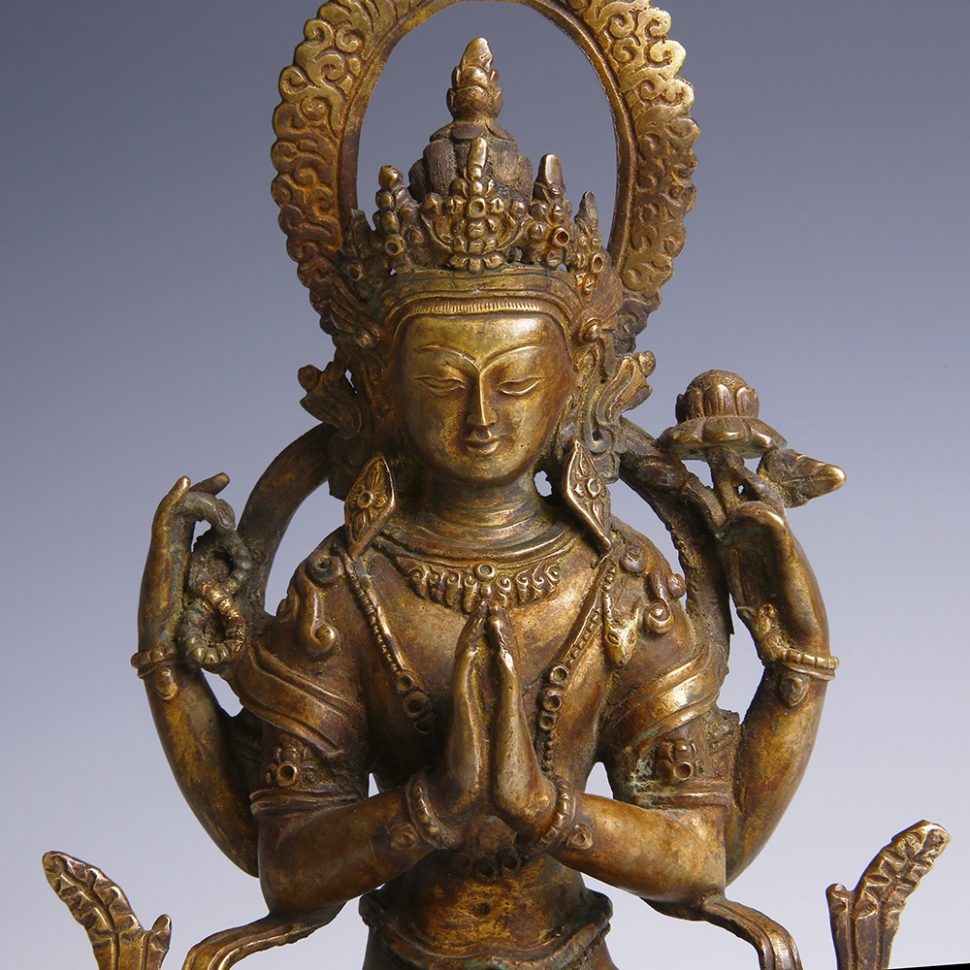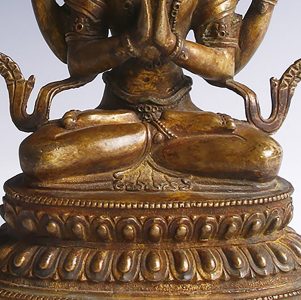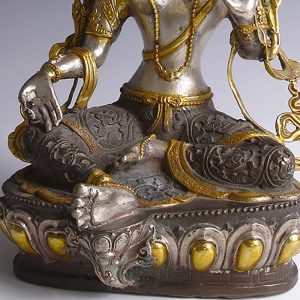Understanding Buddha Poses and Postures
The Buddha statues and the iconographic representations of other Buddhas and Bodhisattvas are often depicted while performing a number of different poses and ritual postures. Also referred to as an asana, there are over 100 poses illustrating the life of the Buddha. And each posture will have a specific hand gesture, called a mudra, and associated with the specific posture.
Find listed below few examples of the most important and popular Buddha’s asanas and mudras.
Hand Gestures – Mudras

Abhaya Mudra
The Abhaya mudra represents protection, peace, benevolence, and dispelling of fear. The mudra was probably used before the onset of Buddhism as a symbol of good intentions proposing friendship when approaching strangers. In this mudra the Buddha is usually depicted with the right hand raised to shoulder height, the arm bent and the palm facing outward with the fingers upright and joined and the left hand hanging down while standing.
Vitarka Mudra
Called also the Gesture of Teaching, is one of the most widespread mudra. It symbolizes the transmission of teachings and it can be done with both the right and the left hand. The palm of the hand is turned outwards to symbolize, not only the teaching through the discussion, but also without the use of words. The thumb and fore finger touch each other to form a circle that represents the flow of energy. The other fingers remain straight up.


Dhyana Mudra
This mudra refers to the Gesture of Meditation. The seated Buddha is depicted featuring the hands resting in the womb with the palms facing upwards. The right hand rests on the left, with the thumbs touching each other while the other fingers remain relaxed. In this way a triangle is formed, which represents the spiritual fire that consumes all impurities.
Namaskara Mudra
The Namaskara Mudra is the name for the position of the hands when they are pressed together at the palms, with fingers extended upwards and thumbs touching at the tip. They are either seen held at the heart chakra, at the sternum, or the third eye chakra, at the point between the eyes. It is a gesture of greeting, prayer and adoration, and the joining of the two palms is also thought to symbolise the existence of two realms as one; Vajradhatu and Garbhadhatu, the two facets of one spiritual life.

Feet Positions – Asanas

Dhyanasana
A meditative pose featuring the legs crossed and the feet resting on the legs towards the womb, the plants of both feet are visible and facing upwards.
Lalitasana
In the posture of ‘royal ease’, the left leg is drawn up and the right foot is extended. This asana symbolised her willingness to ‘come down’ from her throne to help those who called upon her.

Filed under: Gandhara, India & Bactria Tags: , Ancient Statues, Buddhism, Buddhist Asanas, Buddhist Mudras
Comments: Comments Off on Understanding Buddha Poses and Postures